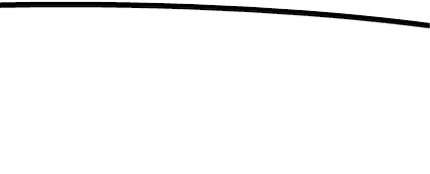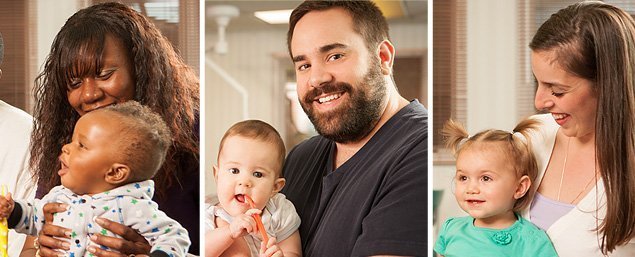





The first step toward your baby's full, bright smile can be a bit of a pain. Literally! We're talking about Teething, of course.
Teething can start any time between ages 3 and 12 months. Most babies begin teething around the age of 6 months. As primary teeth come through, your baby might become cranky, drool more, not want to eat solid foods, have sore gums or swollen gums, and chew on things to ease the pressure from the tooth pushing through the gum.
But this stage isn't all bad! In fact, like any of our Smilestones, teething can make for some cute (and drooly!) moments to balance out the fussiness and discomfort. Here are some healthy and responsible tips that will help and also double as great Smilestones photo ops:
Safety First! Choose safe teething toys. Here are some ideas:
Keeping It Clean: Many strategies for comforting a teething baby include putting something in the baby’s mouth. Everything that goes in the mouth should be cleaned first to keep the baby healthy. Read the pacifier’s or teething toy’s package for directions on how to clean it. Some items are dishwasher safe and some are not.
Gummy Massage: Gently rub the baby’s gums with a clean finger for about 2 minutes. Many babies find the pressure soothing. For babies who already have some teeth, be careful the baby doesn’t bite you!
Say Freeze! Some frozen foods can help ease teething pain, as cold helps ease the pain of sore gums. Give the baby a cool clean wet washcloth, spoon, pacifier, or teething ring to chew on. Teething rings can be put in the refrigerator but not the freezer. Chewing frozen teething rings can make a baby’s cheeks or chin become bumpy and turn reddish-purple. Note: To prevent mouth injuries, do not let a baby walk while holding a spoon.
NOTE: Dentists and pediatrics recommend against using teething gels and liquids on babies’ gums. They can cause serious health problems, including death. If nothing works to ease your baby’s teething pain, ask your baby’s doctor or dentist for suggestions and directions on how to use pain medicine safely.
Smilestones Photo Tip: Take a close up picture of your baby's reaction (drooling is welcomed!) while enjoying their favorite teething toy! https://www.teethfirstri.org/smilestones/
